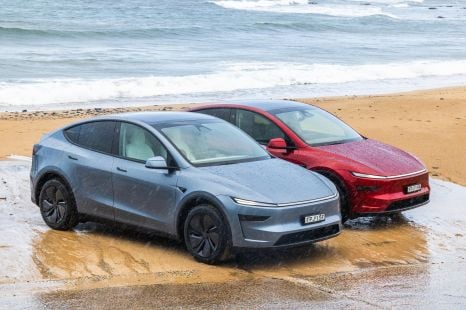

William Stopford
2026 Tesla Model Y price and specs
6 Days Ago

News Editor
Kia’s first ground-up all-electric model isn’t just an Ioniq 5 with a different face. Instead, it’s a flagship grand tourer with serious performance.
The 2021 Kia EV6 is the cousin of Hyundai’s recently-revealed Ioniq 5 and shares its E-GMP all-electric platform.
It’ll go on sale in Australia in the fourth quarter of 2021, and pricing and spec information will be released closer to then.
Like the Ioniq 5, the base battery is a 58kWh lithium-ion unit and there’s a choice of rear- and all-wheel drive.
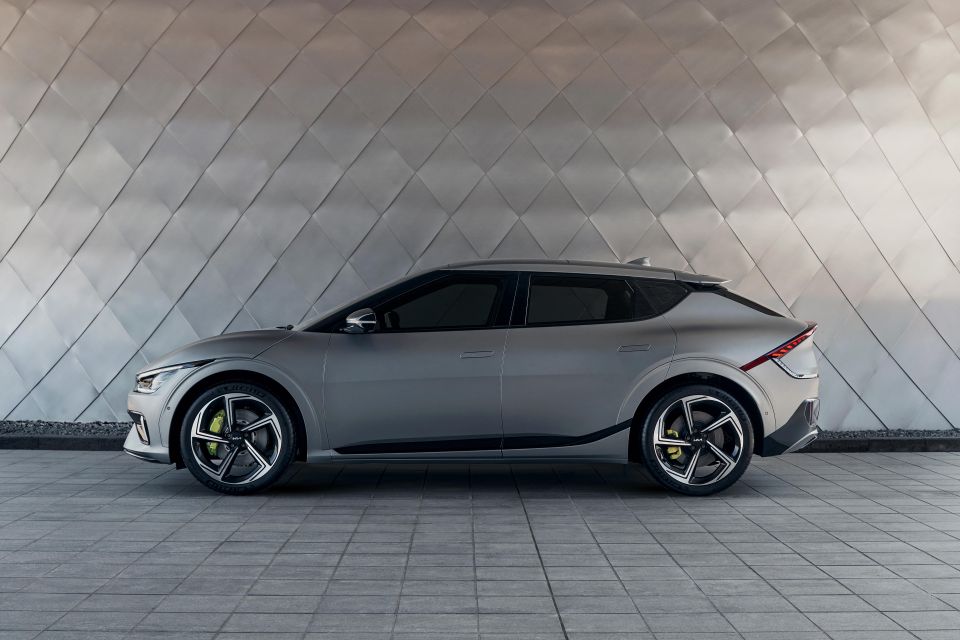
Where the EV6 differs is in its optional battery, which is 77.4kWh instead of 72.6kWh.
Maximum range in the EV6 is 510km on the stricter WLTP test cycle when equipped with rear-wheel drive and the long-range battery, while the Ioniq 5’s best figure is 480km.
The flagship, all-wheel drive GT mates the larger of the two batteries to a dual-motor electric powertrain, good for outputs of 430kW of power and 740Nm of torque and a 0-100km/h time of just 3.5 seconds.
To help get the power to the ground, the EV6 GT adds an electronic limited-slip differential.
The GT’s top speed is 260km/h and Kia says it’s targeting 405km of range (WLTP).
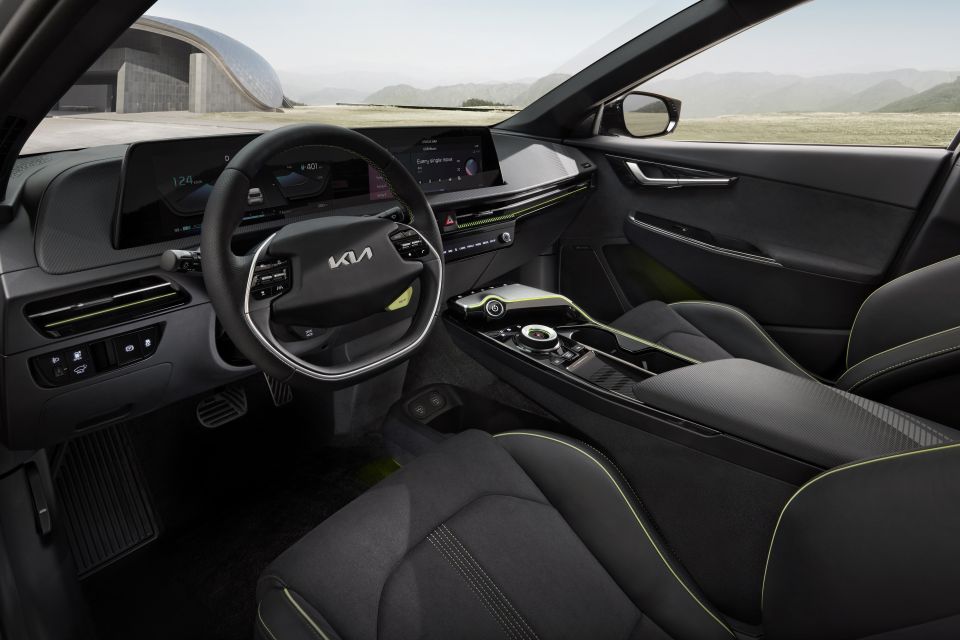
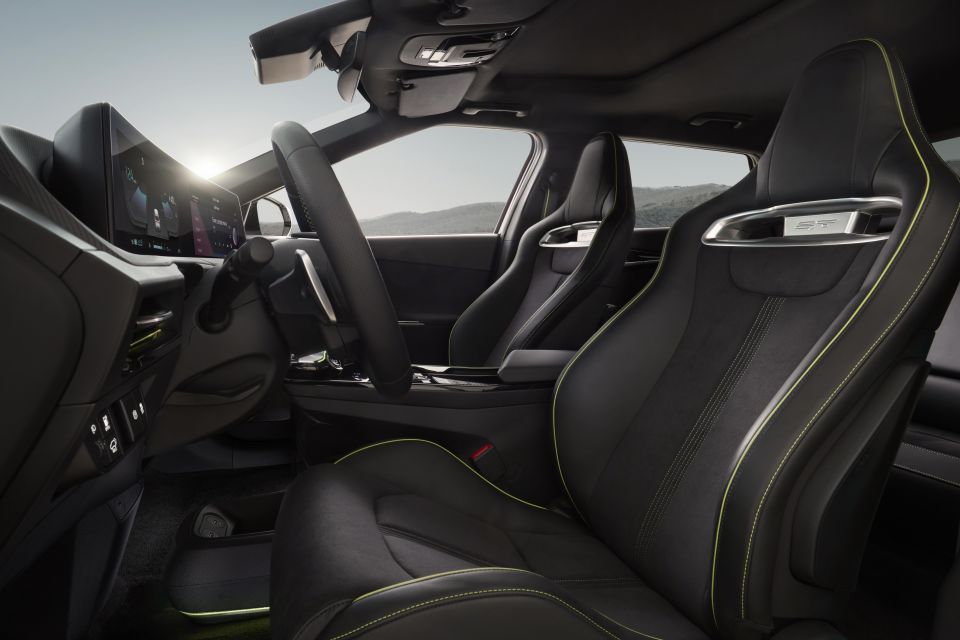
Kia says there are no plans to launch an EV6 faster than the GT, but will introduce GT variants of some of its other upcoming E-GMP models.
The standard EV6 and EV6 GT-line will be available with a choice of standard- and long-range batteries and rear- and all-wheel drive.
The rear-wheel drive, standard-range model features a single electric motor with 125kW of power and 350Nm of torque.
Adding all-wheel drive adds an electric motor at the front, bumping outputs to 173kW and 605Nm.
If you opt for the long-range, 77.4kWh battery, there’s 168kW of power and 350Nm in rear-wheel drive guise and 239kW and 605Nm in all-wheel drive models.

While Kia hasn’t released range and 0-100km/h figures for all models, it says the all-wheel drive, standard-range model does the dash in 6.2 seconds and upgrading to the long-range powertrain cuts that down to 5.2 seconds.
The EV6 supports 800V ultra-fast DC charging, allowing you to go from 10 to 80 per cent battery capacity in 18 minutes and add 100km of range in just 4.5 minutes in long-range, rear-wheel drive models.
The charging unit has a vehicle-to-load (V2L) function which Kia says can discharge up to 3.6kW of power from the battery, enough to operate a 55-inch TV and an air-conditioner simultaneously for more than 24 hours.
It can also be used to charge another EV.
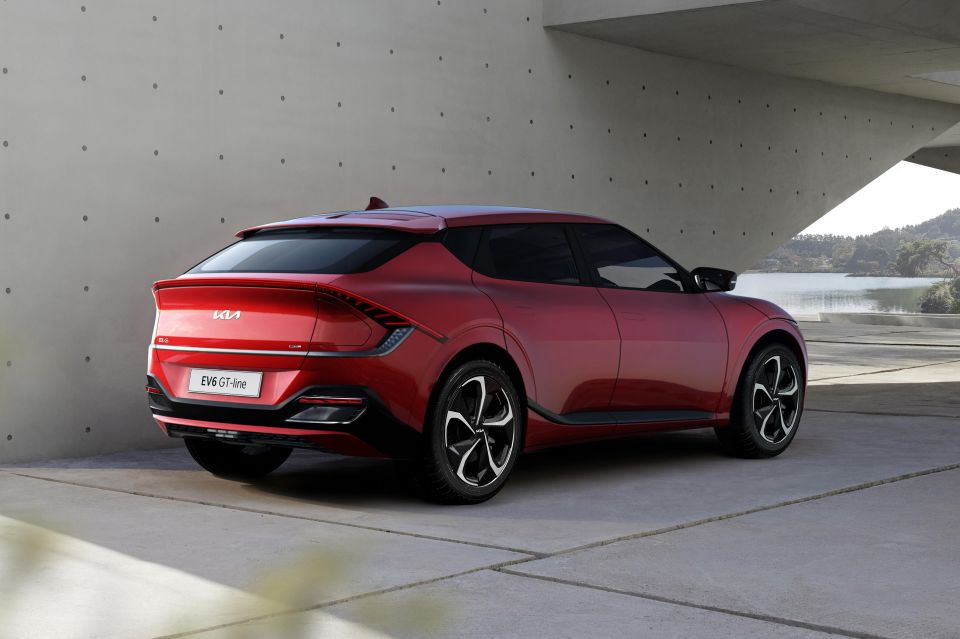
Kia says the EV6 can tow up to 1600kg with more than 35 per cent charge remaining in the battery.
The regenerative braking system can be operated via the paddle shifters and you can choose between six levels: none, levels one to three, i-Pedal, and auto mode.
The i-Pedal mode harvests the maximum amount of energy from its brakes, affording you one-pedal driving.
Kia says the EV6 defies categorisation and is like the “Stinger of [Kia’s] EVs”.
“You can think of it as a crossover, but the crossover between what is maybe less clear and that’s a little bit the point” said design head Karim Habib.
“You have let’s say the presence of something closer to a crossover but on the other hand you have something with the gesture more akin to a sports car.”
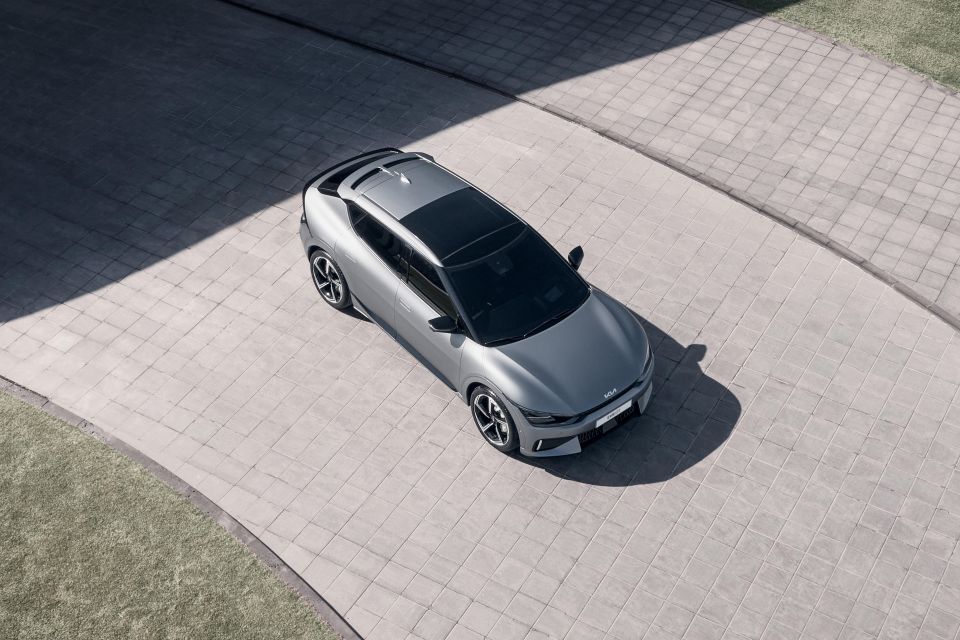
The EV6 measures 4695mm long, or 4680mm in base guise, on a 2900mm wheelbase.
Total width is 1880mm in the EV6 and 1890mm in the GT-Line and GT, while height is 1550mm in all bar the GT which is 1545mm tall.
These measurements put it between the Sportage and Sorento in size, though its wheelbase is 85mm longer than that of the Sorento.
There’s 520L of rear boot space in the EV6 and EV6 GT-Line, expanding to 1300L with the second row folded.
Open the bonnet and there’s a 52L storage cavity in rear-wheel drive models and a smaller, 20L one in all-wheel drive models.
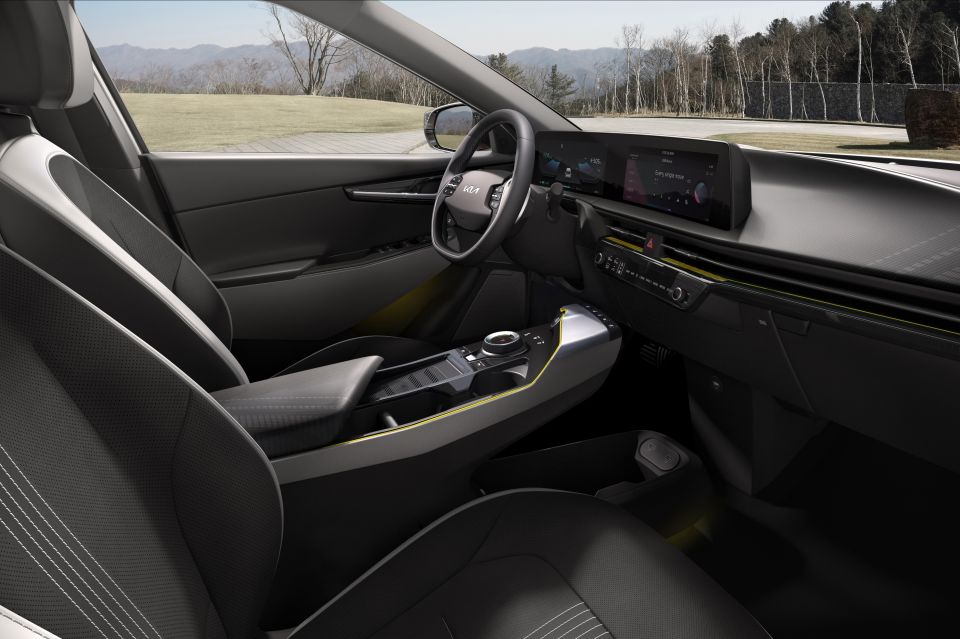
Inside the cabin, there’s a 12.0-inch touchscreen infotainment system and a 12.0-inch digital instrument cluster within a curved glass display.
The infotainment system supports over-the-air updates, while there’s also an augmented reality head-up display.
For sound, there’s an optional 14-speaker Meridian sound system – a first for the brand, which has traditionally tapped JBL or Bose for its up-spec sound systems.
As on some internal combustion engine-powered Kias like the Stinger, there’s Active Sound Design which pumps artificial motor sound through the speakers.
You’ll sit on lightweight “relaxation seats”, which are available with upholstery made from recycled plastics.
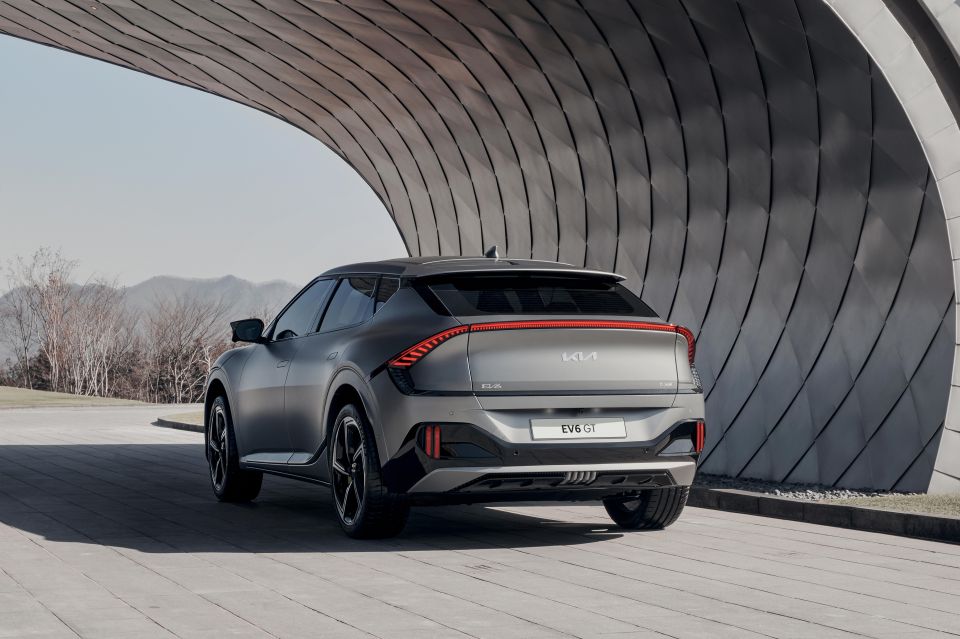
There’s a full-suite of driver assist and active safety features, including safe exit assist, lane-following assist, and Kia’s new Highway Driving Assist 2.
The latter keeps you travelling at your set speed and centred in your lane, moving the vehicle if it detects the possibility of a collision. You can also change lanes with the click of the indicator stalk.
The EV6 will also offer the Remote Smart Parking Assist feature found on models like the Kia Sorento GT-Line and Genesis G80 and GV80.
Kia says it’s targeting 100,000 annual EV6 sales: 30,000 in its domestic market, 40,000 in Europe, 20,000 in the US, and the remaining elsewhere.
The company wants electrified and electric vehicles to make up 40 per cent of its global sales by 2030, with an annual sales target of 1.6 million overall and 880,000 for all-electric vehicles specifically.
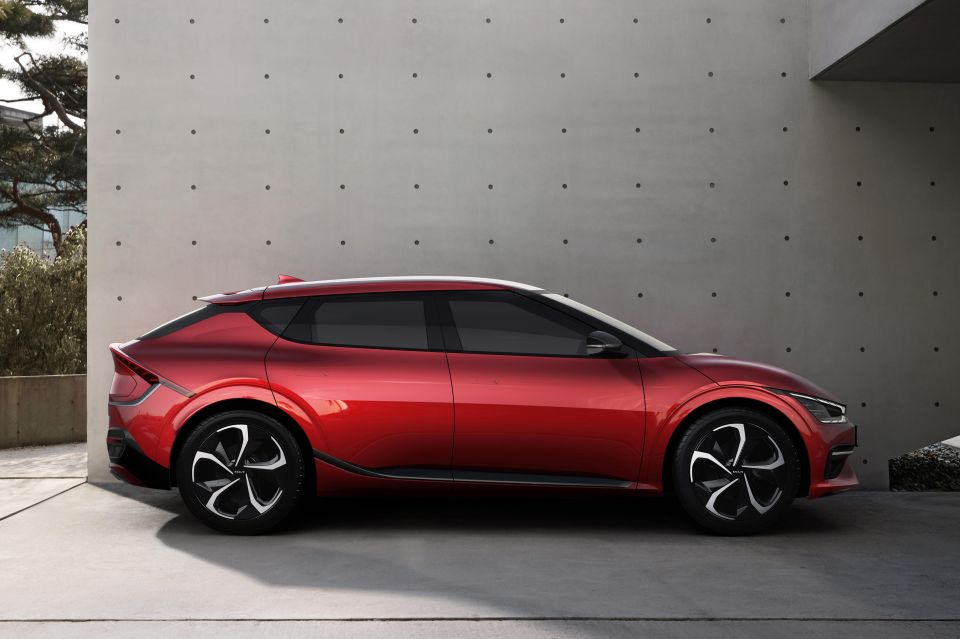
The EV6 is the first of 11 new all-electric models being introduced by the brand between now and 2026.
Seven of these will be built on the new E-GMP architecture, while four will be EVs based on existing models like the next-generation Niro.
While the EV6 GT will offer heady performance, Kia has no plans to introduce a track-focused sub-brand à la Hyundai’s N brand.
Kia teased its fleet of upcoming EV models earlier this year, with a range including a slinky sedan, a compact coupe, and what looks like a city-sized hatchback.
Where expert car reviews meet expert car buying – CarExpert gives you trusted advice, personalised service and real savings on your next new car.
William Stopford is an automotive journalist with a passion for mainstream cars, automotive history and overseas auto markets.


William Stopford
6 Days Ago
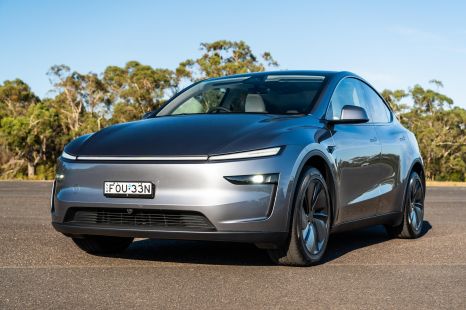

CarExpert.com.au
7 Days Ago
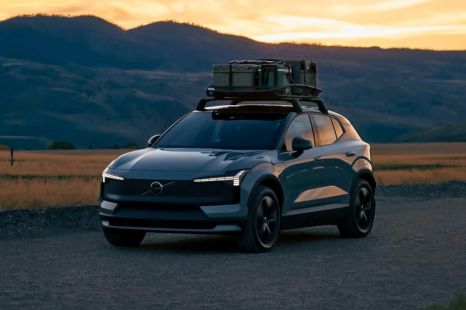

James Wong
8 Days Ago


Damion Smy
8 Days Ago
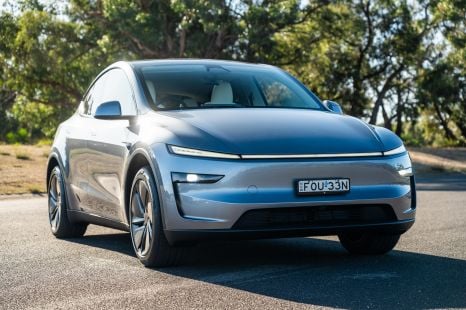

William Stopford
12 Days Ago
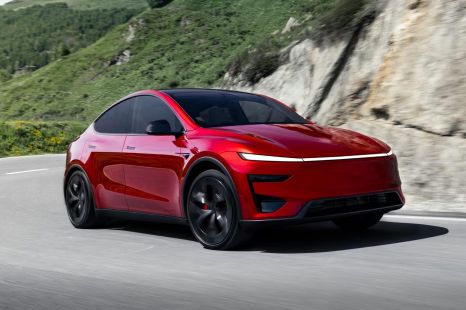

William Stopford
15 Days Ago